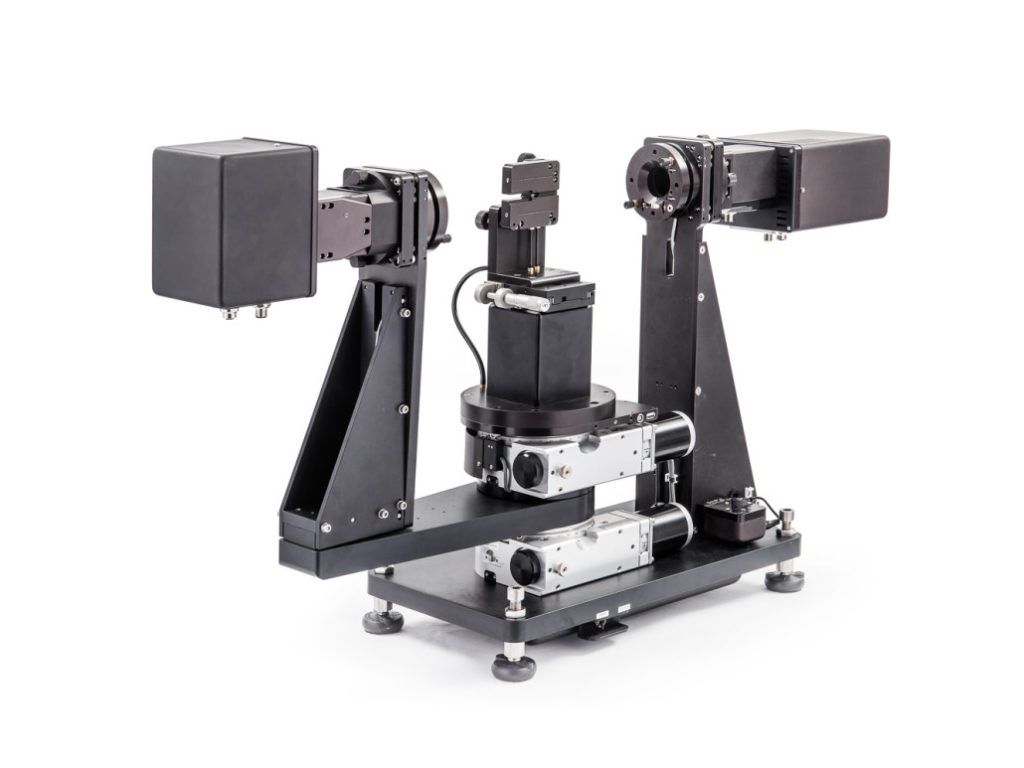
RC2 Ellipsometer
RC2
The RC2® design builds on 25 years of Ellipsometer experience. It combines the best features of previous Ellipsometer models. This includes innovative new technology such as dual rotating compensators, achromatic compensator design, advanced light source and next-generation spectrometer design. Because of this the RC2 Ellipsometer is a near-universal solution for the diverse applications of spectroscopic ellipsometry.Why an RC2? Because of the advantages such as.
Advanced Measurement Capabilities
The RC2 is the first commercial spectroscopic ellipsometer to collect all 16 elements of the Mueller matrix. AS a result Mueller matrix SE allows characterization of the most advanced samples and nanostructures.Best Measurement Accuracy
Advanced measurement capabilities allow the best accuracy from fast CCD-based ellipsometry.Dual Rotating Compensators
Synchronous rotation of two compensators provides high accuracy, high speed, and most noteworthy the complete Mueller-matrix measurements.Achromatic Compensator Design*
New achromatic compensator design with optimized performance over a wide spectral range. *patent pendingWide Spectral Range
Collect over 1000 wavelengths from the ultraviolet to the near infrared – all simultaneously. Consequently you achieve speed and range.Fast Measurement Speed
Synchronous operation of both compensators allows highly accurate data without waiting to “zone-average” over optical elements. AS such you collect the entire spectrum (over 1000 wavelengths) simultaneously in a fraction of a second.Advanced “Dual” Light Source
Dual light source for extended spectral range with computer control of beam intensity. Automatically optimize signal on any sample (low or high reflection). As a result the RC is the most advanced fast scanning Ellipsometer availableProduct Category: Ellipsometry
Industry: Particle and surface science
Supplier: J A Woollam
Description
ANISOTROPY APPLICATIONS
Generalized Ellipsometry
Traditional ellipsometry measurements are ideal for standard thin film characterization. However, more advanced measurements are required for anisotropic materials.
Generalized Ellipsometry collects six values compared to the standard two (Ψ, ∆). This additional information completely characterizes the cross-polarization of anisotropic samples.
Jones Matrix for Anisotropic Sample:

Generalized Ellipsometry Measures:


Anisotropic PEN (Polyethylene Naphthalate) Generalized Ellipsometry measurements of the transmitted beam provide high sensitivity to the birefringence in anisotropic PEN films.
Variable Angle Generalized Ellipsometry was used to fully characterize the biaxial indices (nx ≠ ny ≠ nz) of the PEN substrate.
Complete Mueller-matrix
The RC2 can characterize the full Mueller-matrix of a sample. This advanced data type insures appropriate characterization of complex samples that are both anisotropic and depolarizing.
Mueller matrix for anisotropic, depolarizing sample:


Viewing the entire Mueller matrix allows access to different polarization effects in advanced samples. The yellow and green sections are related to Diattenuation and Polarizance, respectively. The red section shows unrotated Retardance. Further rotating the sample will shift this information into different regions of the Mueller matrix.

Rotation MM-SE scan shows the retardation signature from an anisotropic sample in the bottom-right nine elements.
Liquid Crystal
Twisted nematic liquid crystal films introduce the complexity of an anisotropic film with a smoothly varying optical axis. With the thick liquid crystal layer sandwiched between glass substrates, the Mueller-matrix measurements insure the best measurement.

The complete Mueller-matrix was measured for a twisted liquid crystal. This enabled characterization of the optical axis twist and pre-tilt, and liquid crystal anisotropic refractive index.

FAQ's
Is automated mapping included?
The RC2 is highly customizable. We offer several options for automated mapping.
Is table included?
The table pictured is an optional feature convenient for containing computer and electronics.
Can the RC2 be used in situ?
Yes. Modular source and receiver can be attached to chamber.
Which software package is included?
CompleteEASE
What is the difference between M-2000 and RC2?
The M-2000 was the first widely-used high-speed ellipsometer. It has a long history of success in research and production, and it’s optical design includes a single rotating compensator. The RC2 is a newer design with many of the same great features combined with innovative new technology. Further, it has two rotating compensators, which allow measurement of the full Mueller-matrix.
Specifications
| Ellipsometer Configuration | Dual RCE | |
| Wavelength Range | D D+NIR X X+NIR X+XNIR U U+NIR |
193-1000 nm 193-1690 nm 210-1000 nm 210-1690 nm 210-2500 nm 210-1000 nm 210-1690 nm |
| Number of Wavelengths | D D+NIR X X+NIR X+XNIR U U+NIR |
~800 ~1075 ~790 ~1065 ~1065 ~790 ~1065 |
| Detector | CCD | |
| Angles of Incidence | 45°-90° (Automated Angle Base) 20°-90° (Vertical Automated Angle Base) ~65° (Focused Base) 65° (Fixed Angle Base) 65° (Test Base) |
|
| Data Acquisition Rate (Complete Spectrum) |
0.3 seconds (2-10 seconds is Typical) | |
| Max substrate thickness | 18mm | |
Facility Requirements |
||
| Power | 100/240 VAC, 47-63Hz, <1 Amp |

